|
The Plop-in-the-Box is designed for enthusiasts who want a high quality, interesting, and not terribly expensive design -- but who can't or don't want to build their own cabinets. It is intended for use with the excellent new Parts Express .375 cu. ft. finished cabinet.
I have chosen drivers that are meant to be surface mounted. No routing is required or even desirable. Just cut two holes and plop in one of GR Research's M130 shielded or unshielded woofers, and a BG Neo 3 PDR planar tweeter (with face plate), also available from GR Research. The Neo tweeter provides very open, detailed sound that is as good or better than the OW1 above 10 kHz. And it costs almost $30 less. GR Research will supply everything you need for this kit except the cabinet and the 50 ohm resistor (which you can get at Radio Shack, or build up with smaller values) using foil inductors and by-pass caps for $230. Specifically, if you ask Danny for the Plop-in-the-Box stuff, he will send you 16 gauge Alpha Core inductors, Axon true caps with .1uF film and foil by-pass caps, Links resistors, ports, wire, screws, binding post cups, heat shrink, and drivers for $230. Just click here.
Cut the holes so that the center-to-center distance between the tweeter and woofer is from 5-3/4 inches to 6 inches. The drivers may be centered both vertically and horizontally on the front baffle. The port goes on the back opposite the tweeter center and should be 1-3/4 inches by 4 inches.
Here are my measurements. The Neo 3's on-axis response has quite a few diffraction hills and valleys, but these smooth out off axis.
On Axis Response:

Response at 15 degrees off axis horizontally:

Response at 30 degrees off axis:

Response at 45 degrees off axis:
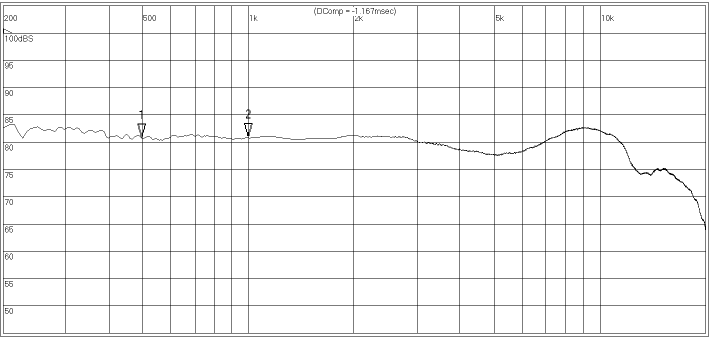
Here is the response with the tweeters connections reversed. It shows the crossover point of 2.8 khz, and demonstrates that the tweeter and woofer are in phase when connected with direct polarity:
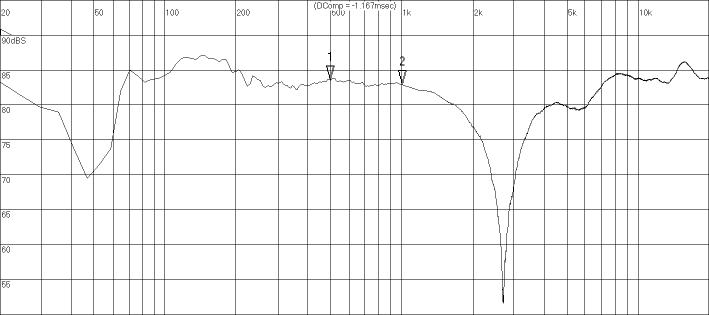
Finally, here is a plot that shows the superb vertical dispersion of the Neo3 planar. There is a tendency to associate limited vertical dispersion with planar and ribbon drivers, but this is only true for the longer units that are capable of low crossover points. The Neo3 is essentailly perfect in its vertical dispersion behavior, as the following graph illustrates. The measurement is taken with the low pass filter disconnected, but with the high pass filter in line, and with the mic simulating a 6-foot tall listener standing a few feet back from a speaker on a 24" stand. With the low pass filter engaged, there is a depression around the crossover region (as there will be for most similar designs with or without planar tweeters), but this has nothing to do with the high frequency dispersion of the Neo3.
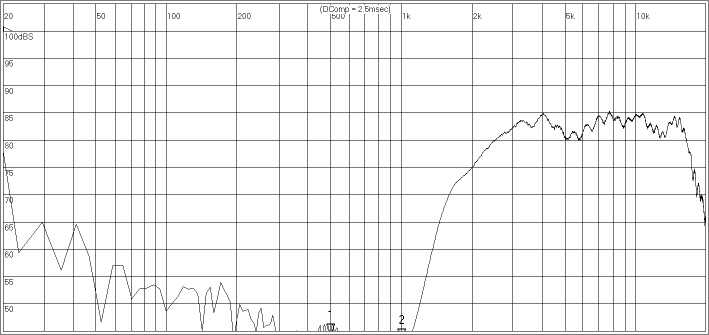
Here is the woofer circuit. The little resistors in line with the two series inductors don't really exist. They represent the dcr of the 16 Ga coil. The 50 Ohm resistor in parallel with the first woofer inductor is very real, however. It provides valuable shaping in the midtreble.
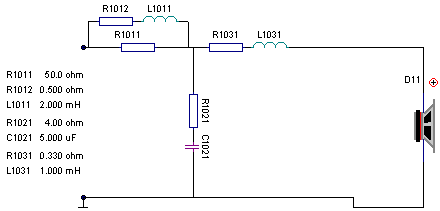
Here is the tweeter circuit. Depending on your listening room and your personal preferences, you may wish to increase the series tweeter resistor to 4.0 Ohms.
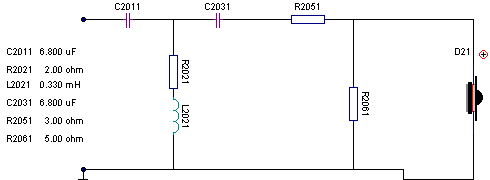
| 
